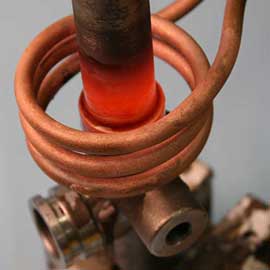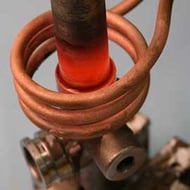Curing Material on an Aluminum Mandrel
Objective Heat a customer supplied aluminum cylinder to 80-120°C for a material curing application. More application notes
Processes
Processes: More
Processes: More

Industries:
Industries: More
Industries: More
Industries: More

Products:
Products: More
Services:
Services: More

Learn:
Learn: More
About:


Brazing is a way of joining two metals. Usually, brazing requires the use a a filler material, for example flux, that melts and wets the surface of the metals. Sounds all very easy, but brazing is all about precision. That is, the temperature of the flux has to be lower than the melting point of the metals to be joined. And, when we say precision, we mean: you need induction heating for your brazing process. And here is why...

Induction brazing delivers the heat to the joint area only. This feature creates a perfectly brazed joint, which also improves the visuals. This is very important for for instance automotive manufacturers.
Brazing with induction is fast, energy use is minimal and your output increases in high volumes. Need we say more?
Induction brazing dosn't expose the employers to open flames, unlike the ovens or torches. Induction heating localizes the heat precisely at the brazing area, which doesn't affect the outside temperature. It contributes to a pleasant working environment and the health of the personnel.
Last but not least, it is perfect for copper, brass, aluminum or steel. And, you can easily braze two different materials, because the process is controllable.
Are you currently applying brazing in your manufacturing process? Consider induction heating for improving your brazing application. Ambrell has over 30 years of induction heating experience and brazing is the area of our know how. Visit our knowledge center or simply request a lab service for complimentary analysis. Learn more about our versatile product line for your brazing application and contact us for a tailored solution.
Interested in Ambrell developing a brazing solution for you? Download our brochure or contact us today!

Objective Heat a customer supplied aluminum cylinder to 80-120°C for a material curing application. More application notes

In today’s manufacturing landscape, efficiency, precision, and sustainability are critical. Induction heating—a process that uses electromagnetic...

When it comes to many manufacturing processes, including this forging application, precision and efficiency are critical. Traditional heating methods...